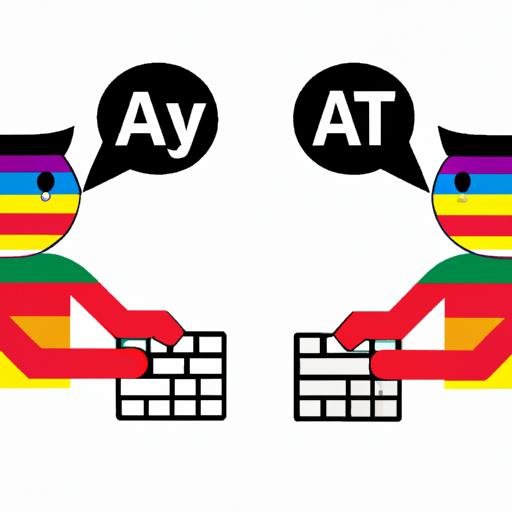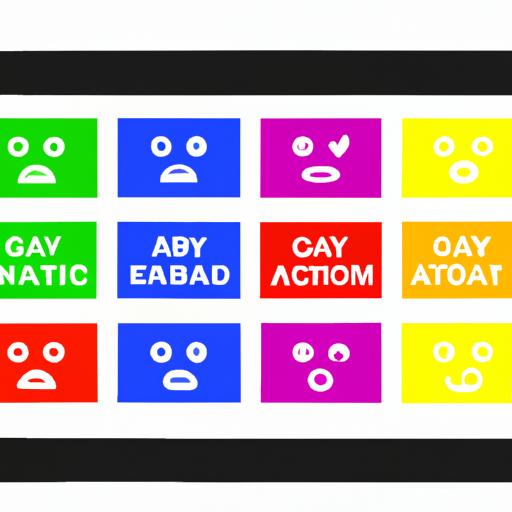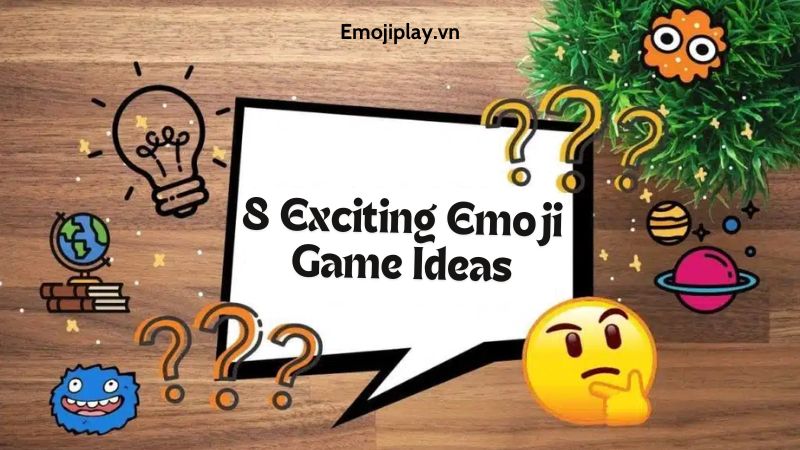Introduction

In this digital era, where communication has taken a predominantly virtual form, emojis have become the unsung heroes of expression. These tiny characters have revolutionized the way we convey emotions, adding a touch of playfulness and clarity to our messages. However, amidst this vibrant landscape, a darker side lurks – the rise of anti-gay emojis and their detrimental impact on the LGBTQ+ community.
Paragraph 1: Emojis have become an integral part of our digital interactions, transcending language barriers and enhancing our ability to communicate effectively. From conveying joy and laughter to expressing sadness or love, emojis have become the universal language of emotions. They offer a nuanced and concise way to express ourselves in a world where text alone often falls short.
Paragraph 2: Unfortunately, as with any tool, emojis can also be misused and weaponized. Anti-gay emojis have emerged as a distressing trend, spreading hatred and discrimination within the online realm. These symbols carry messages of intolerance and bigotry, targeting individuals based on their sexual orientation or gender identity. The impact of these anti-gay emojis cannot be underestimated, as they perpetuate harmful stereotypes and contribute to the marginalization of the LGBTQ+ community.
By shedding light on the issue of anti-gay emojis, we can begin to understand the gravity of this problem and work towards creating a more inclusive and accepting digital environment. Let’s delve deeper into the origins, impact, and ways to combat this distressing phenomenon in the sections to come.
Understanding Anti-Gay Emoji

Definition and Examples of Anti-Gay Emoji
Emojis, with their wide range of symbols, have the power to express diverse emotions and ideas. Unfortunately, some individuals have misappropriated this expressive tool to create anti-gay emojis. These symbols specifically target the LGBTQ+ community by conveying derogatory and discriminatory messages. Examples of such emojis include the combination of homophobic slurs, offensive gestures, or the manipulation of existing emojis to convey hateful meanings.
Analysis of the Intent behind these Emojis
To truly comprehend the impact of anti-gay emojis, it is essential to analyze the intent behind their creation. These emojis are not mere coincidences or harmless jokes; they are deliberate acts of hatred and discrimination. They aim to demean and marginalize individuals based on their sexual orientation or gender identity. The creation and usage of anti-gay emojis perpetuate harmful stereotypes, contribute to online harassment, and fuel a culture of intolerance.
Discussion on the Harm Caused by their Usage
The consequences of anti-gay emojis extend beyond the digital realm, inflicting emotional and psychological harm on the LGBTQ+ community. These emojis validate and amplify existing prejudices, leading to increased feelings of isolation, anxiety, and depression among those targeted. The repetitive exposure to these symbols reminds individuals of the discrimination they face in society, eroding their sense of safety and well-being. Furthermore, the widespread usage of anti-gay emojis normalizes and perpetuates bigotry, hindering progress towards equality and acceptance.
Understanding the true impact of anti-gay emojis is crucial in comprehending the depth of harm inflicted upon the LGBTQ+ community. In the subsequent sections, we will explore the origins and spread of these emojis, as well as the profound impact they have on the lives of those affected.
Origins and Spread of Anti-Gay Emoji
Exploration of how and where these emojis originated
The origins of anti-gay emojis can be traced back to the darker corners of the internet, where hate and discrimination find fertile ground. These emojis were created with the intent to demean and belittle individuals based on their sexual orientation or gender identity. These symbols often mimic common emojis but carry subtle alterations that convey derogatory messages.
Examination of their dissemination across various platforms and social media networks
Anti-gay emojis, once created, quickly spread like wildfire across various platforms and social media networks. Their dissemination is facilitated by the ease of copying and pasting these symbols, allowing individuals to perpetuate hate with just a few clicks. These emojis can be found in comment sections, online forums, and even private messages, making it challenging for platforms to monitor and control their usage effectively.
The anonymity offered by online platforms further fuels the rapid spread of these emojis. Users can hide behind pseudonyms, emboldened by the lack of accountability, making it easier for them to express their discriminatory views. As a result, the LGBTQ+ community often finds itself subjected to relentless attacks, hindering their ability to express themselves freely and participate in online discussions without fear of harassment.
It is crucial to recognize the role platforms play in either allowing or combatting the spread of anti-gay emojis. By implementing stricter content moderation policies and actively monitoring user-generated content, platforms can create safer digital spaces where hate speech and discrimination are not tolerated.
In the upcoming sections, we will delve into the impact of these anti-gay emojis on the LGBTQ+ community, as well as explore strategies to combat this issue effectively. Stay tuned for more insights!
Impact on the LGBTQ+ Community
Emotional and Psychological Consequences
The usage of anti-gay emojis inflicts deep emotional and psychological wounds on the LGBTQ+ community. These derogatory symbols reinforce harmful stereotypes and perpetuate discrimination, leaving individuals feeling invalidated and marginalized. Imagine being bombarded with emojis that mock your identity, questioning your worth and existence. The emotional toll is immense, leading to heightened anxiety, depression, and a sense of isolation among LGBTQ+ individuals.
Moreover, the psychological impact extends beyond the immediate emotional distress. Continuous exposure to anti-gay emojis can erode self-esteem and contribute to internalized homophobia or transphobia. It forces individuals to question their own identities, feeding into the societal stigma and creating a hostile environment for self-acceptance and self-expression.
Prevalence of Cyberbullying and Online Harassment
The rise of anti-gay emojis has fueled a surge in cyberbullying and online harassment specifically targeted at the LGBTQ+ community. Social media platforms have become breeding grounds for hate speech and discriminatory behavior, with individuals hiding behind screens to unleash their prejudice. LGBTQ+ individuals face an alarming amount of online abuse, ranging from derogatory comments to the deliberate use of anti-gay emojis as weapons of harassment.
The consequences of cyberbullying and online harassment are profound. It not only damages mental well-being but also restricts freedom of expression and hampers the ability to participate fully in digital spaces. The LGBTQ+ community deserves to navigate the online world without fear of judgment or persecution, and it is crucial that we address the issue of anti-gay emojis to create a safer and more inclusive digital landscape.
By understanding the emotional and psychological impact faced by the LGBTQ+ community and acknowledging the prevalence of cyberbullying and online harassment, we can take steps to combat this harmful phenomenon. Let’s explore strategies to raise awareness and promote tolerance in the upcoming sections.
Conclusion
As we conclude this exploration into the world of anti-gay emoji copy and paste, it is evident that we must take a proactive stance to combat this harmful phenomenon. The Emoji Play brand, together with individuals and organizations, has a crucial role to play in fostering a more inclusive digital landscape.
By raising awareness about the negative impact of anti-gay emojis, we can empower individuals to recognize and reject these symbols of hatred. Education is key in dismantling stereotypes and promoting understanding. Let us strive to educate ourselves and others about the importance of respect and acceptance for all individuals, regardless of their sexual orientation or gender identity.
Inclusivity in digital communication is not just a goal but a necessity. We should advocate for platforms and social media networks to implement stricter policies against the usage and dissemination of anti-gay emojis. By doing so, we can create a safer and more welcoming online space for everyone.
In conclusion, let us remember that the power of emojis lies in their ability to connect us and convey emotions. Let us use this power responsibly, spreading love, acceptance, and support. Together, we can create a digital environment where diversity is celebrated, and anti-gay emojis are nothing but a relic of the past.
Emoji Play stands united with the LGBTQ+ community and encourages everyone to join this ongoing fight against discrimination and prejudice. Together, we can ensure that emojis continue to serve as a tool of connection and understanding, rather than one of division and harm. Let us embrace a future where love triumphs over hate, both online and offline.










